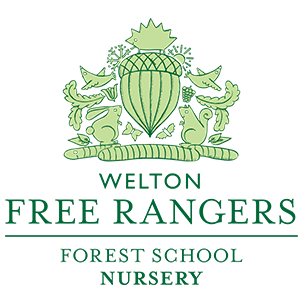Here is a story that I've been telling recently, I heard it first from the wonderful Noah Messomo, originally from Cameroon and who now works in Dorset. This is a misremembered and edited version, drawing slightly on a couple of ideas from Aesop's fables 'Androcles and the lion' and 'The lion and the mouse'.
[soundcloud url="http://api.soundcloud.com/tracks/82636822" params="" width=" 100%" height="166" iframe="true" /]
One day Mo Seeka Seeka left his home a walked into the jungle
'Step, step, cheep, cheep; step, step, cheep, cheep; step, step, cheep, cheep'
Suddenly, out of the dense foliage came an Elephant
Elephant looked down at Mo Seeka Seeka, Mo Seeka Seeka looked up at Elephant
"Mo Seeka Seeka, what are you doing out in the jungle by yourself, don't you know it's dangerous?"
"Mr Elephant, I am going to see the king! I am going to ask him for some food and some water because my parents are so hungry and so thirsty that they are feeling tired... and I want to play!"
"OK, off you go: but be careful."
And on he walked
'Step, step, cheep, cheep; step, step, cheep, cheep; step, step. cheep, cheep'
Suddenly, out of the dense foliage came Giraffe
Giraffe looked down at Mo Seeka Seeka, Mo Seeka Seeka looked up at Giraffe
"Mo Seeka Seeka, what are you doing out in the jungle by yourself, don't you know it's dangerous?"
"Mr Giraffe, I am going to see the king! I am going to ask him for some food and some water because my parents are so hungry and so thirsty that they are feeling tired... and I want to play!"
"OK, off you go: but be careful."
And on he walked
'Step, step, cheep, cheep; step, step, cheep, cheep; step, step. cheep, cheep'
Suddenly, out of the dense foliage came Monkey
Monkey looked down at Mo Seeka Seeka, Mo Seeka Seeka looked up at Monkey
"Mo Seeka Seeka, what are you doing out in the jungle by yourself, don't you know it's dangerous?"
"Mr Monkey, I am going to see the king! I am going to ask him for some food and some water because my parents are so hungry and so thirsty that they are feeling tired... and I want to play!"
"OK, off you go: but be careful."
And on he walked
'Step, step, cheep, cheep; step, step, cheep, cheep; step, step. cheep, cheep'
Suddenly, out of the dense foliage came Snake
Snake looked down at Mo Seeka Seeka, Mo Seeka Seeka looked up at Snake
"Mo Seeka Seeka, what are you doing out in the jungle by yourself, don't you know it's dangerous?"
"Mr Snake, I am going to see the king! I am going to ask him for some food and some water because my parents are so hungry and so thirsty that they are feeling tired... and I want to play!"
"OK, off you go: but be careful."
And on he walked
'Step, step, cheep, cheep; step, step, cheep, cheep; step, step. cheep, cheep'
Suddenly, Mo Seeka Seeka came to the king's den
Mo Seeka Seeka heard a rumble and he shivered, Mo Seeka Seeka heard a grumble and he quivered, Mo Seeka Seeka heard a growl and he shook.
Out of the den came LION!!!
Lion looked down at Mo Seeka Seeka, Mo Seeka Seeka looked up at Lion
"Mo Seeka Seeka, what are you doing out in the jungle by yourself, don't you know it's dangerous?"
"Mr King! I am here to ask for some food and some water because my parents are so hungry and so thirsty that they are feeling tired... and I want to play!"
Lion laughed "why should I give you anything!?" but as he stepped forward to eat Mo Seeka Seeka he stood on a thorn: OW!!!
Mo Seeka Seeka leaned forward and pulled the thorn out with his beak. Lion was so grateful that he gave Mo Seeka Seeka a huge sack of food and a huge jug of water and Mo Seeka Seeka put them over his shoulders and off he walked
'Step, step, cheep, cheep; step, step, cheep, cheep; step, step. cheep, cheep'
All the way home.
Since telling this story, the children have come up with new and different ideas: what if Mo Seeka Seeka could see in the dark jungle? How can he carry such huge amounts of food and water home with him? Is Lion really nasty? We also looked at the story through a 'story map' so that the children could tell the tale by following the sequence of pictures

Have fun with this story and see what suggestions your child has for it.
Tim
Addendum: We just wrote a new story this week with two children narrating, me 'illustrating' and then three others colouring it in.
"One sunny day, all the dinosaurs grew big. Felix the dinosaur was being chased by poachers in a helicopter. the other dinosaur was being chased by soldiers and a giant was about to eat him.
Suddenly Triceratops said "stop trying to eat dinosaurs" the giant felt sad and so did the poachers. The dinosaurs cheered them up with a big ROAR!"






 Space rockets travelling to space: one child would sit inside whilst the others stood around the edge giving them a countdown before shaking the box and welcoming them out
Space rockets travelling to space: one child would sit inside whilst the others stood around the edge giving them a countdown before shaking the box and welcoming them out




